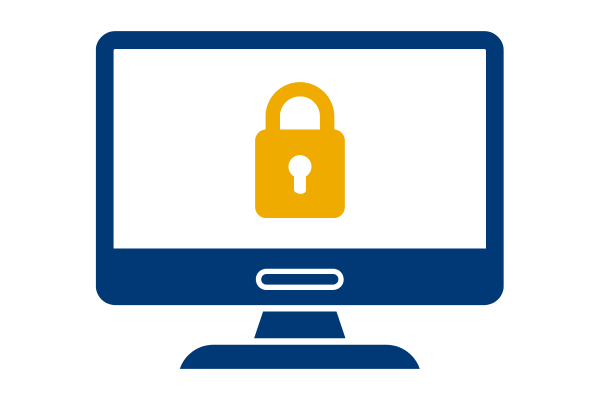Phishing and Scams
Phishing is a form of social engineering delivered by email. Phishing scams appear to originate from a trusted source to trick you into entering your credentials, revealing personal identifying information (PII), or sending money to them.
The attacker can then use this information to access your accounts, gather additional private information about you in an attempt to steal your identity, and make purchases or apply for credit in your name.
You can learn more about phishing and social engineering by reading the information here.
Phishing Tips
- Move your mouse over links in emails and it may show a different URL than the one displayed.
- If you are encouraged to click a link that claims to lead to a legitimate site (such as Amazon), look online for a trusted URL leading to that site instead.
- Check the sender address to verify that the email comes from an official source.
- Check for slight mispellings - in the URL, company name, etc. For example, paypa1.com instead of paypal.com.
- Use additional software - Many browsers have add-ons/extensions/plug-ins that can help detect phishing sites.
- Be wary of anything that gives a sense of urgency, or states that it requires immediate action.
- Don't click anywhere in suspicious emails—even in what may appear to be white space.
- Be wary of too-good-to-be-true offers such as free airline tickets or vacation.
- Don’t open attachments in unexpected or suspicious emails or instant messages.
- Don’t send passwords, bank account numbers, or other private information in an email.
Note that Kent State will NEVER ask for your password through email.
For more advice on how to avoid phishing scams, visit our Fight the Phish page!
Have I Been The Victim Of A Phishing Scam?
If you believe that you have been the victim of a phishing scam, change your password immediately and report it to phish@kent.edu or submit a support ticket. Also, don't forget to check out our account security article for tips on how to keep your accounts safe. If you are using Gmail, you can also end all other active sessions. This should stop any unauthorized access to your account. Instructions on how to end active session in Gmail can be found here. You can also end active sessions in Outlook by following the instructions here.
When a victim of a phishing scam, it's common practice for the hackers to change your signatures, forwards, filters, and other settings. If you believe you fell victim to a scam, we recommend checking the following settings in your mail client.
- A signature for an email is text that is automatically inserted at the end of an email. It is usually something you choose to set up. Make sure it is not an unfamiliar one setup.
- Forwards can be set up to automatically forward to another email address. Make sure it is not forwarded to unknown address without your permission.
- Inbox rules/filters can be used to automatically sort or delete anything in your inbox or sent box etc. Scammers can use it to re-direct/hide their messages.
- Check all of the folders in your email account - sometimes the malicious actor may create new folder to store messages they sent/receive or put them into the Trash when using your account to perform scams.
What Are Scams?
Scams come in many forms and are a type of social engineering to either gain your personal identifiable information (PII), or steal your money. They are getting more and more sophisticated, particularly when it comes to targeting you online and through mobile devices. It’s important to know how to recognize a scam so you can protect yourself from fraudsters.
Note that KSU will NEVER ask for your password through e-mail, so be wary of anything that says otherwise.
Please report any scams you receive to phish@kent.edu. You can learn about additional ways to report phishing scams here: Report Phishing
How To Detect a Scam?
- Scammers pretend to be from organizations you know
- They pretend that you won a prize or that there is a problem
- Scam calls will usually pressure you to act immediately
- If it sounds too good to be true, then it probably is
- Scammers will tell you to pay in a specific way
Steps To Avoid Scams
- Don’t give out any personal information
- Resist pressure
- Block unwanted calls or messages
- Don't click on any pictures, links, or white spaces in a suspicious email
- Stop and talk to someone before taking action or giving out any information
Please refer to the Federal Trade Commission (FTC) site to read more about common scams and how to report them.
If you've received an unsolicited message containing a suspicious link or attachment, appears to be an attempt at grabbing your credentials or getting you to send money for something, there's something that we've got to do about it! The technologies and algorithms used in attempting to scam people changes every day and we need to continue to be persistent in doing what we can to train our protection technologies so they can do better at protecting you!
Report The Suspicious Message To Kent State University's Phishing Team For Analysis
Here at Kent State University, we have a team of dedicated experts who are ready to review that suspicious message for any potential threats. The team will perform a variety of specialized tests to examine attachments, links, and other aspects of a message to make sure there is no potential for harm. If there are any threats found from within, our engineers will perform some additional work directly with our email systems to immediately secure our environment from that specific threat! To report messages to the team at Kent State, simply forward the questionable message to phish@kent.edu and one of our Engineers will begin their work.
Report Text or Voice Messages
Phishing messages delivered via text message or phone call can still be reported, though you will need to use different methods depending on which apps and service provider you are using. Popular apps include Google Messages on Android devices and Messages on iPhone.
Service providers may have their own spam filters, such as Verizon, T-Mobile, and AT&T. These can be used to proactively prevent smishing and vishing messages from reaching your device.
Report The Suspicious Message To Microsoft's Phishing Team For Analysis
If there is a threat that manages to make its way into your mailbox, you also have the opportunity to report the message in question directly with the systems at Microsoft. This mechanism gives us the opportunity to directly train their systems to better protect O365 customers worldwide as those messages are processed through their Active Threat Protection Technology. To report these messages to Microsoft, there is a button located directly on the message.
Types of Phishing and Scams
Scammers will use many different methods to try and trick you into giving them important information. Click one of the topics below to learn more about phishing techniques, common scams, and additional advice to help keep yourself safe!





